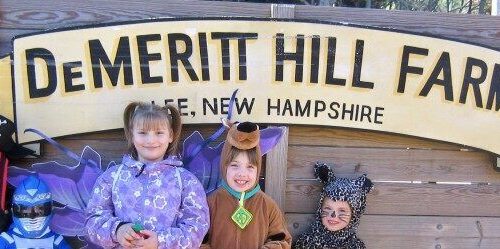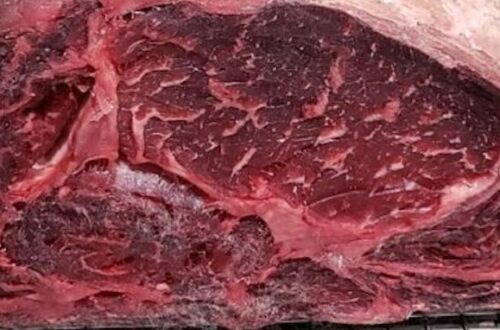Enjoying New England’s Fall Foliage

Autumn is without a doubt northern New England’s best time of the year. The other seasons have their place, although Spring here might better be named ‘mud and bug season,’ but in the Autumn, New England is truly in her glory days. This is due, in a word, to one thing: foliage. This year, like most years, the peak weekend for enjoying New England’s foliage is Columbus Day weekend (October 10-12). Sure, the leaf peeper tour buses start hitting the scenic back roads of New England in mid-September, but those folks are way too early to the party. It’s not until September gives way to October that the foliage begins to burst forth in all its glory.
Driving to and from work each day for the past couple of weeks has, as it does every Autumn, brought my senses alive, allowing me to see again as if for the first time the full scope of nature’s bounty. For many folks, that’s enough–to see the bright reds and yellows that line their commute each day, and chart the progress of the season in that way. For others, even though we experience it every year, setting aside a day or two to do some serious exploring and leaf peeping is the only way to get our fix. My wife and I have made it a tradition to take a relaxing foliage drive together each year. Some years we make an overnight trip of it; other years it’s a less ambitious day trip or two, but every year we try to visit a different place or drive a different route in our effort to drink in the season.
For the novice leaf peeper planning their first New England foliage drive, here are some tips to make your foliage drive a success.
- Clean your car windows, inside and out. You’re making all this effort to experience all the beauty nature has to offer; don’t put a dirty car window between you and your goal.
- Pick out some nice music to set the mood for your foliage drive. Conversation is great, but we tend to get caught up in conversation and forget why we’re on the road. A bit of nice music in the background only enhances the leaf peeping experience.
- Plan out 60-70% of your drive, leaving enough time for some spontaneous side trips. Sure it’s important to do a bit of planning, but flexibility is key. Elisa and I would have never discovered Scott Farm, the spectacular views at Quechee Gorge, the farm where Vermont Shepherd cheeses are made, or the beautiful cattle grazing on Pitcher Mountain if we’d been sticking to a schedule that had been written in stone. Discovery is half the fun of the journey.
- Eat lunch outdoors. Pack some food, and stop somewhere beautiful to eat it.Restaurants are fine, and if your trip takes you near an interesting one, that’s great. But set aside one meal to have outside–you’ll be glad you did.
- Be flexible. If the forecast calls for rain at the last minute, hold off a week and move your foliage drive south a hundred miles or so. Peak foliage begins in the northern reaches of Maine, New Hampshire, and Vermont and gradually moves southward with the passing of the season. One year Elisa and I had committed to a two-day trip through Vermont, and instead of postponing it when the forecast called for a heavy, steady rain that weekend, we went anyway. We had a good time–we almost always do–but it wasn’t the foliage drive we had envisioned.
- Bring a camera, and get going early. Any professional photographer will tell you that the best pictures in natural light are the ones taken right after sunrise or just before sunset. The horizontal rays of the sun on the foliage will give you some stunning photographs as souvenirs of your trip.
Now that you’ve gotten this far, I figure you’ll want an example of one of the many possible trips you might take. Here’s a favorite of mine.
The Western Loop: Vermont Route 9 and Massachusetts’s Mohawk Trail
This one isn’t a true loop, because it doesn’t end quite where it starts. Starting in Brattleboro, Vermont, one of my favorite small New England towns, we head west on Route 9. Not far out of town is long-time Brattleboro landmark and great breakfast place, the Chelsea Royal Diner, the centerpiece of which is an authentic 1938 diner made in Worcester, Massachusetts, probably by the Worcester Lunch Car Company.
Continuing west on Route 9 you’ll enjoy some great views as the road tops out at the now defunct Hogback Mountain Ski Area. Soon you’ll come the center of Wilmington, Vermont, and the intersection with Route 100. Yankee Magazine did a wonderful article earlier this fall in their September/October issue that focuses on traveling Route 100 during foliage season; click here for that article. And while I’m mentioning Yankee Magazine, they have a foliage web site with wondeful resources, including an interactive map that provides a timeline of peak foliage in the six New England states. That website is www.yankeefoliage.com.
Continuing west of Route 9 you’ll soon reach the western side of the state as you enter Bennington, Vermont. Bennington County is the home to five traditional New England covered bridges. This is a great chance to get off of the main highways and do a bit of poking around in rural Vermont. The Bennington Chamber of Commerce has some great information about Bennington County’s covered bridges here.
When you’re finished with Bennington, head south on Route 7. After crossing into Massachusetts you’ll come to Williamstown, one of the most picturesque towns in New England, and home to Williams College. There’s nothing like a casual stroll around the downtown area, and this is a great place to stop for meal. Williamstown sits on the junction of Route 7 and Route 2, an east-west road that forms, from Williamstown in the west to Orange toward the east, the Mohawk Trail, America’s oldest scenic highway. Enjoy your ride east on Route 2, making certain to stop where Route 2 crosses the Connecticut River on the French King Bridge. This bridge, built in 1932, is one of the most beautiful steel bridge in New England, and it’s worth a walk down from the parking area on the western side of the river to take a look at the bridge’s superstructure. Also, parking here and walking across the bridge on foot is a very popular activity–the view north and south of the Connecticut river from the walkway is superb! Here’s a great picture of the bridge’s superstructure that someone took from the river.
After this point, there’s still plenty of great foliage to be seen along Route 2, and you can continue east as far as you wish–eventually you’ll find yourself in Boston. If you want to make a true loop of it, you can pick up Interstate 91 north and return to Brattleboro, your starting point. Happy traveling!



